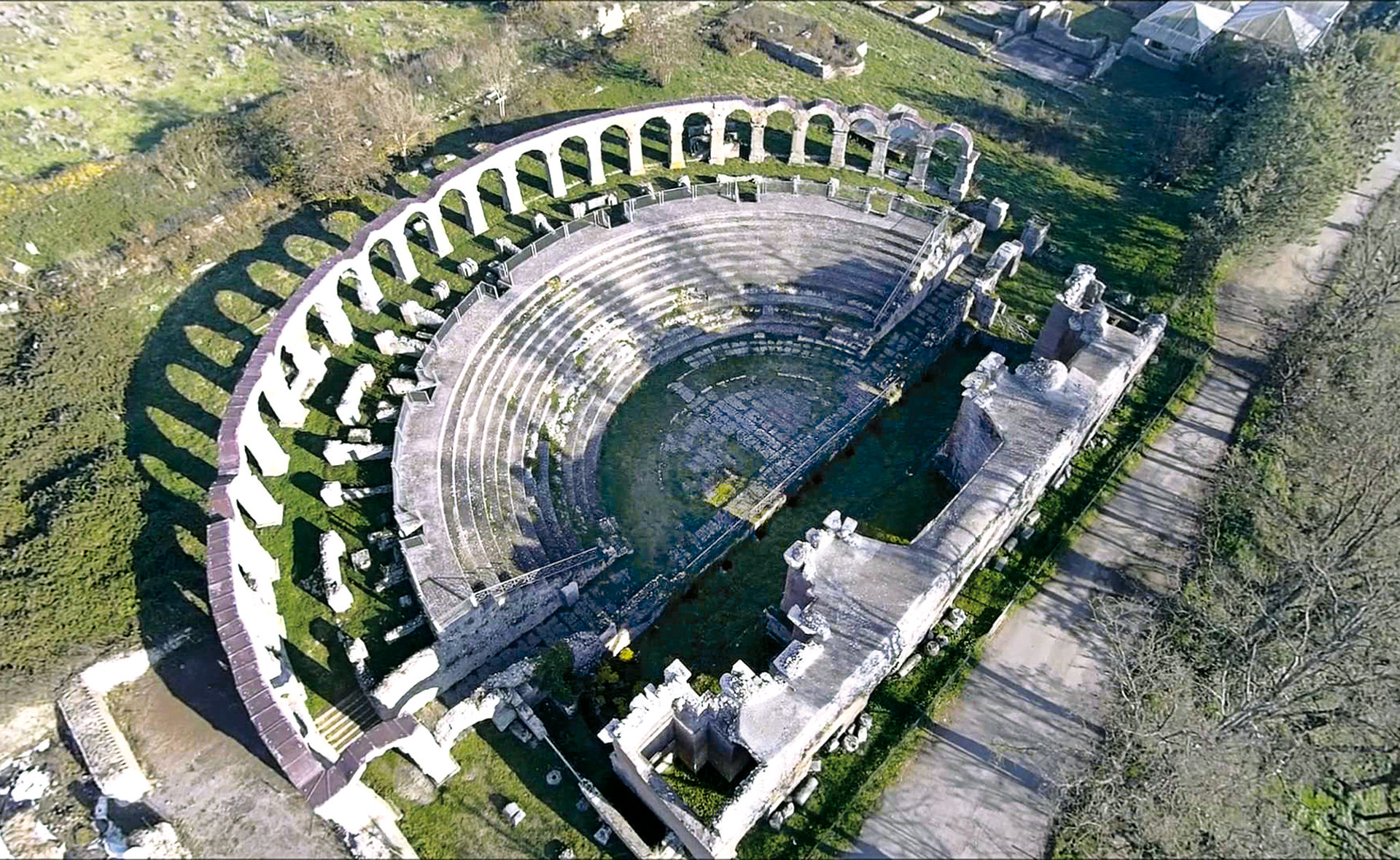In Tuscia, Province of Viterbo, the Ferento archaeological site offers visitors the opportunity to walk among ancient ruins and enjoy breath-taking views.

Located between Montefiascone (VT) and the Cimini Mountains, Ferento is the legacy of a very rich history, which enjoys a privileged link with Rome. This is where the Roman emperor Otho was born, who reigned in 69 AD, as well as Flavia Domitilla, wife of Vespasian and mother of Titus and Domitian, the three emperors of the Flavian dynasty (69-96 AD).
The Ferento archaeological site has been the subject of various excavations since the beginning of the twentieth century, including those supported by Swedish King Gustaf VI Adolf, known as the “archaeologist king”.
The excavations brought the theatre, the baths and the Via Ferentiensis, the city’s decumanus, back to light. An active and lively city developed from the second century BC, when a Roman foundation was built on the previous Etruscan site. During the Augustan and Julian-Claudian period (27 BC-68 AD), the area was affected by intense development, as evidenced by the signs of restructuring.
Since 1994, the site has once again been subject to excavation, exposing an imperial domus, republican cisterns, houses and shops. From the end of the 5th and 6th centuries, Ferento hosted the episcopal diocese, which transferred to Bomarzo in the 7th century. In the eleventh century, the city’s expansion led to rivalries with neighbouring Viterbo until 1172, the annus horribilis, in which Ferento was destroyed.
Today, walking among these ancient ruins means to immerse yourself in history, and to appreciate the perfect harmony between the creations of mankind and those of nature. The Augustan-era theatre (27 BC-14 AD) is a place of great charm, and features a cavea surrounded by 27 round arches, and a scene, once adorned with sculptures now preserved at the National Etruscan Museum of Rocca Albornoz in Viterbo.
In the summer season, the theatre still reverberates with voices and music as it is regularly transformed into an evocative setting for shows. To the east of the theatre, opposite the decumano, stands the imposing spa complex, of which the frigidarium, the tepidarium and the calidarium are still visible, with the original mosaic floor and remains of columns and walls.
To imagine the charm that the two monumental structures aroused in citizens and visitors, just read an epigraph from the second century AD, which describes Ferento as a splendidissima civitas.
